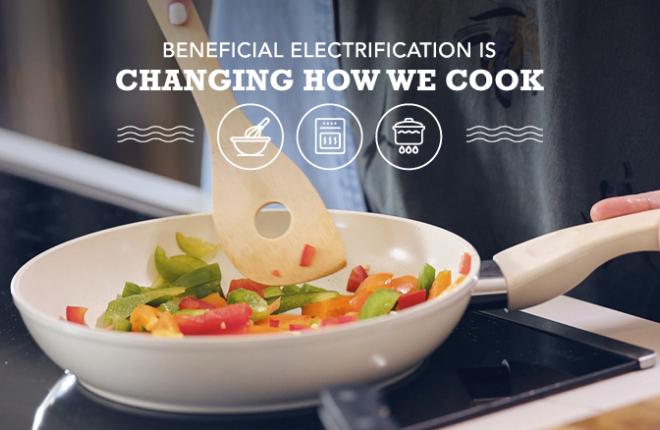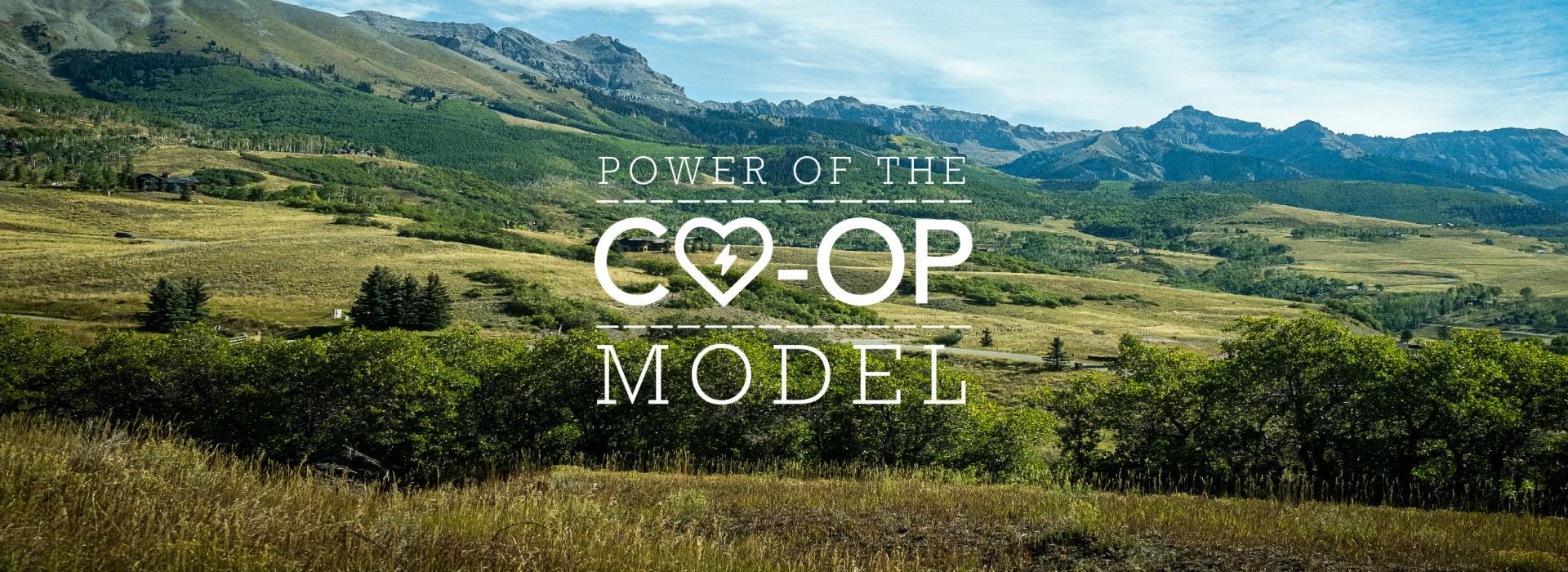
02/08/2024
The Power of the Cooperative Model: Benefits of a G&T
Consumers get the greatest value for their power supply when their utility is part of a cooperative business model. Tri-State is a member-owned and governed organization that operates on a not-for-profit basis. We work hard to deliver reliable and affordable electricity to a 5,800-mile transmission network in the rural West. Tri-State serves electric distribution cooperatives and public power district member-owners in Colorado, Nebraska, Wyoming, and New Mexico. As a cooperative network, we all work together to keep the power on. That was the case last winter when one of our members needed help in an urgent way. Learn more about the cooperative model here.

Storm Response in Rural Areas
In Lake City, Colorado there was a major outage in February 2023 during a winter storm. The equipment failed in the substation during the storm, knocking out power for 28 hours. The temperature dipped to 3 degrees at night, and power shut down across the town. Tri-State immediately contacted Gunnison County Electric Association (GCEA), which jointly maintains the power station. We dispatched crews to repair our failed circuit switcher.
When the crew couldn’t energize the circuit switch, Tri-State collaborated with partners to find a solution. During the outage, GCEA restored power to a line through Lake City to Henson Street. This workaround provided power to critical infrastructure such as the medical center. Tri-State worked with the Colorado Department of Transportation to plow excess snow off Highway 50. This effort cleared the way to bring in a portable substation by truck through Little Blue Canyon, which restored power to approximately 1,900 customers.
“It just amazed us all, that they got that portable substation here from Montrose so quickly. Because of Tri-State, we were able to get power back to all our citizens quickly,” said Hinsdale County Commissioner Robert Hurd.
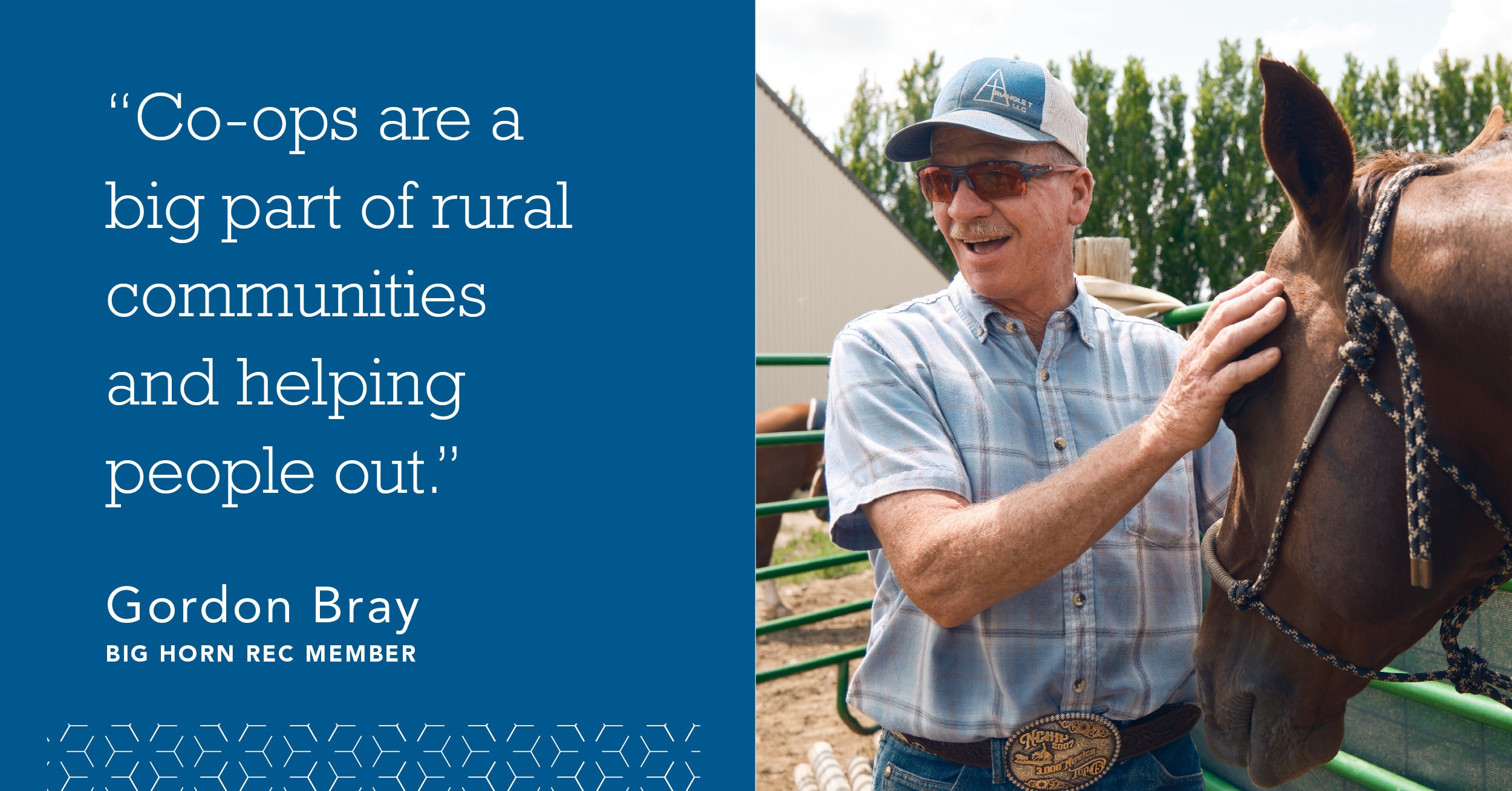
The quick response in Lake City is an example of how Tri-State collaborates with partners for any line disruption that affects the communities we serve. It’s just one of many examples of what makes the cooperative model great. Perhaps the greatest strength of cooperatives is that they operate under democratic control and are owned by the members they serve.
The cooperative model is set up so that each board member gets one vote in the service territory they live in. The board members make decisions about how members’ power is generated and the wholesale rates filed with Tri-State’s federal regulator. This process ensures that Tri-State sets rates fairly and equitably.
Stable and Competitive Wholesale Rates
The cooperative model connects utilities across four states to generate, transmit, and deliver electricity to homes, schools, farms, and a variety of businesses. By giving members a voice in their electric service, we maintain low rates.
Despite cost pressures, Tri-State kept rates competitive for power supply. Tri-State’s board voted for a rate increase of 6.4% in 2024, compared to rate increases in the double-digits for other utilities in the region.
Tri-State kept the Class A Rate change to a net increase of only 1.4% over seven years. The cooperative is continually looking for ways to give value back to members—that's why the board voted for a 4% rate decrease in 2021 that they maintained throughout 2022.
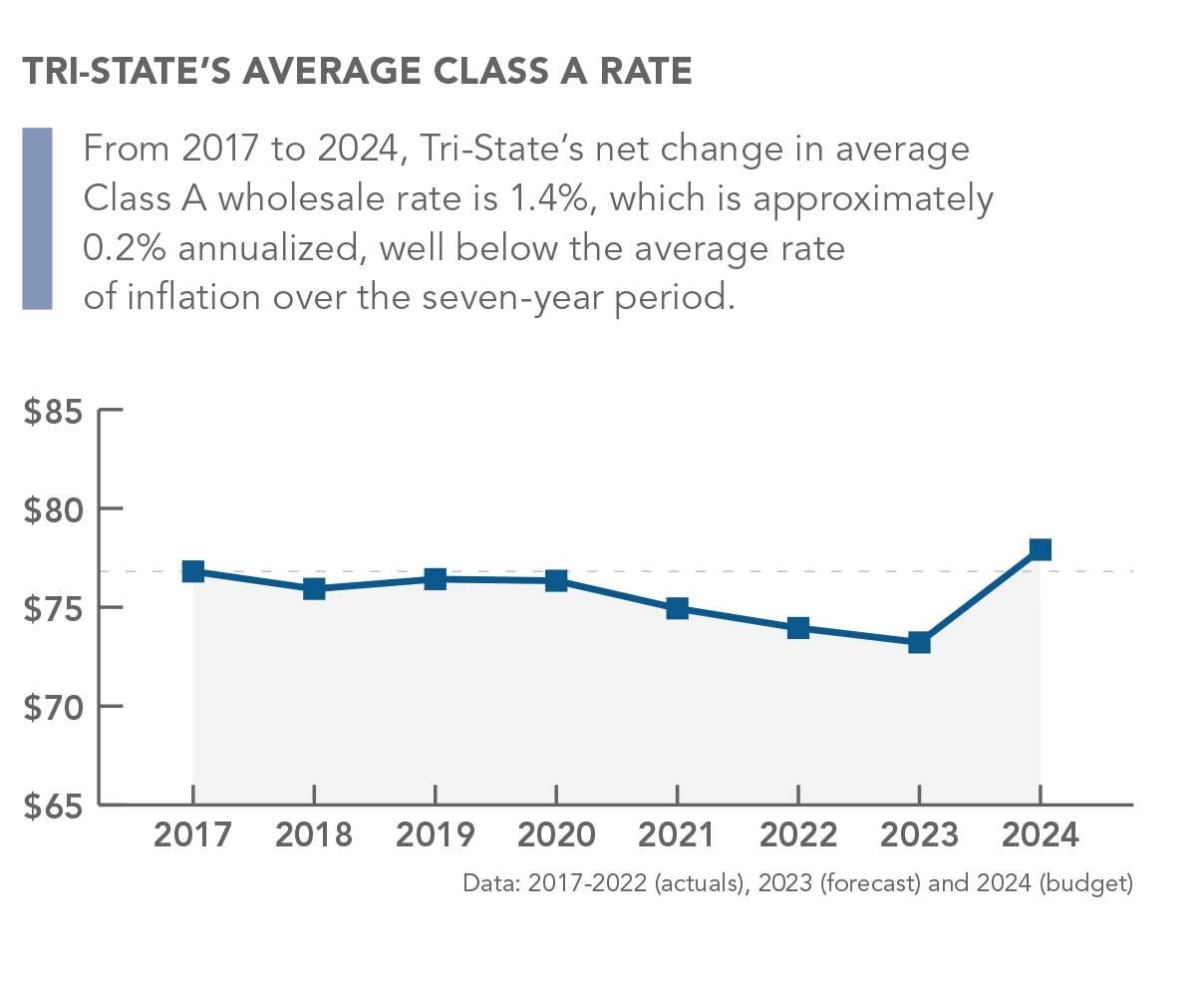
Tri-State communicates all costs for delivering power to members’ distribution systems. These services include scheduled delivery of energy, capacity, transmission, and ancillary services. The cooperative provides financial filings, investment-grade ratings, and independent annual auditing to members through reports.
Support During Supply Chain Challenges
In addition to fighting for affordable rates for our rural communities, Tri-State supports member systems that are experiencing supply chain issues. Tri-State works with a network of vendors to secure essential materials in a timely manner. During the past year, Tri-State has provided member systems with conductors and fittings, surge arresters, insulators, and socket eyes.
In the event of an emergency, the cooperative has worked with partners to provide member systems with portable substations. Since Tri-State buys many parts in bulk, we can support our members that have challenges getting materials at a reasonable price. The cooperative values of meeting the needs of our member systems can also be seen in how they serve their communities.
Shining a Light on the 4-H Club
Basin, Wyoming, is the kind of place where neighbors lend a helping hand. Many residents specialize in managing livestock and agricultural businesses, and the local 4-H Club keeps youth involved in the industry. When the town’s indoor arena needed upgrades to improve efficiency and safety, they turned to their local utility, Big Horn Rural Electric Company (REC). Big Horn helped to install a new transformer for the indoor arena.
"Co-ops are a big part of rural communities and helping people out,” said Gordon Bray, a member of Big Horn REC. “I think their service is better and they’re more customer-oriented.”
Excess Revenue Returned to Members
Through the not-for-profit cooperative, Tri-State returned $10 million to its members in 2022. Tri-State only collects the revenue needed to operate and capitalize its work. It’s important that our members’ balance sheets are strengthened by their ownership and equity in the cooperative.
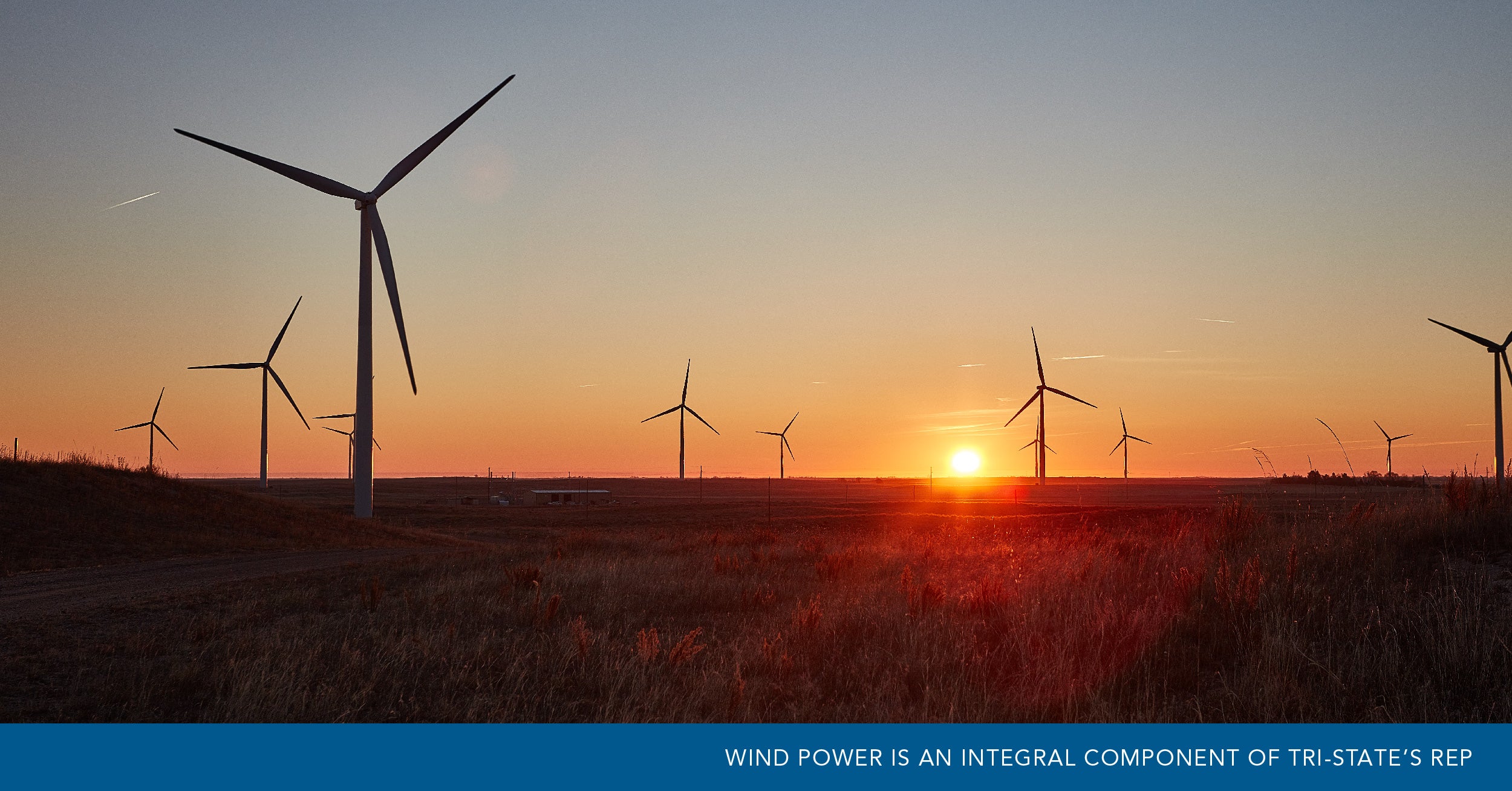
Delivering Clean Energy
In 2025, Tri-State will provide 50% renewable energy sources to cooperative members through wind and solar projects. This investment in a renewable portfolio will power the equivalent of nearly 850,000 homes. We coordinate with members to develop infrastructure and deliver power as their needs change.
For Tri-State, wind power is an integral component of our Responsible Energy Plan. The cooperative’s next major wind resource will be a facility located in the Wyoming/Nebraska planning region for completion in early 2026. The use of clean, electric alternatives and energy efficiency rebates help us to provide cost savings to members.
Empowering Service
Tri-State supports its members through a wide range of programs and products that ensure consumer needs are met. We promote events throughout the territories served such as Lineworker Appreciation Day, Ovid Color Run, and Co-op Youth Leadership Camp. Cooperative employees are active supporters and volunteers in their communities. Tri-State anticipates getting together with representatives at the 2023 Communications and Energy Services Conference. This year we have a unique theme, Co-op Campus, which speaks to how we are learning from each other every day.
--
About Tri-State
Tri-State is a power supply cooperative, operating on a not-for-profit basis, serving electric distribution cooperatives and public power district member-owners in four states. Together with our members, we deliver reliable, affordable and responsible power to more than a million electricity consumers across nearly 200,000 square miles of the West. Visit www.tristate.coop.
Blog Posts
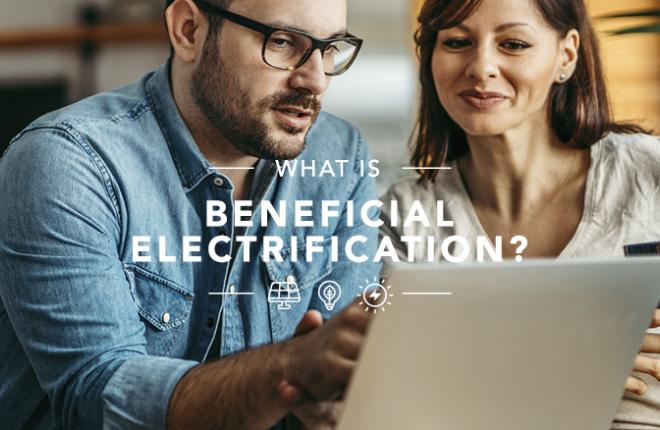
What is Beneficial Electrification?

Tips for Switching to LED Lighting

Energy Saving Water Heaters
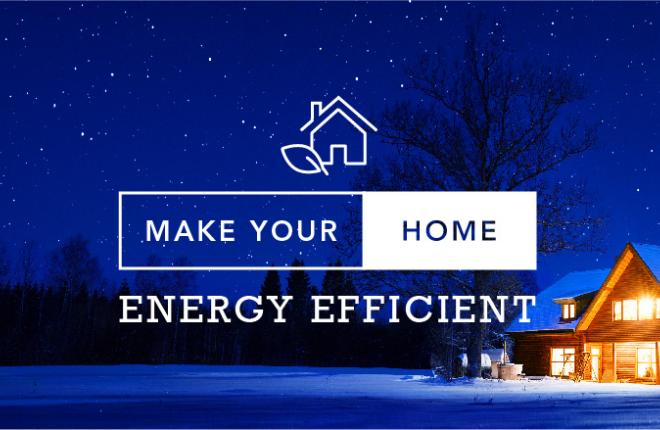
How to Make Your Home More Energy Efficient in 2021
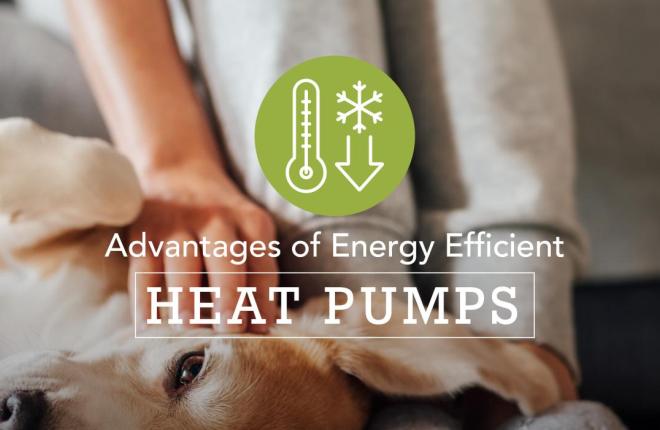
Advantages of Heat Pumps for Energy Efficiency

Fun Winter Activities for the Whole Family

Gift Ideas for the Electrician

Electrical Safety Tips for the Holidays
